After experiencing a barrage of high-end new products from Bonny, I finally got a chance to catch my breath and try out other brands.
I’m not sure when it started, but there seems to be a trend among manufacturers to adjust and replicate specific models. While the workmanship is assured, the strong presence of OEM factories and the simple combinations have gradually become dull.
To be direct, Kawasaki’s new product this time is a youth version of the JS12.

Specifications: 4UG5, with a cap, total weight 92.0g in used condition, balance point 303mm, 6.8mm shaft, 40T material, length 215mm, moderate hardness, wind-breaking frame, 76-hole string bed, 9-3 o’clock string groove, warranty for 30 pounds, string tension 25-27lbs with KT65 string.
This is a matte white snake, which seems to contrast with the snarling image on the cone cap. Does it hint at the racket’s fierce side? Regardless, the blue-gray stickers on the white base coat create a visually harmonious effect, and the snake head on the T-joint looks a bit playful and cute. Kawasaki’s art department shows top-notch skill, but I’m concerned about whether the stickers will withstand the impact of hitting the frame.
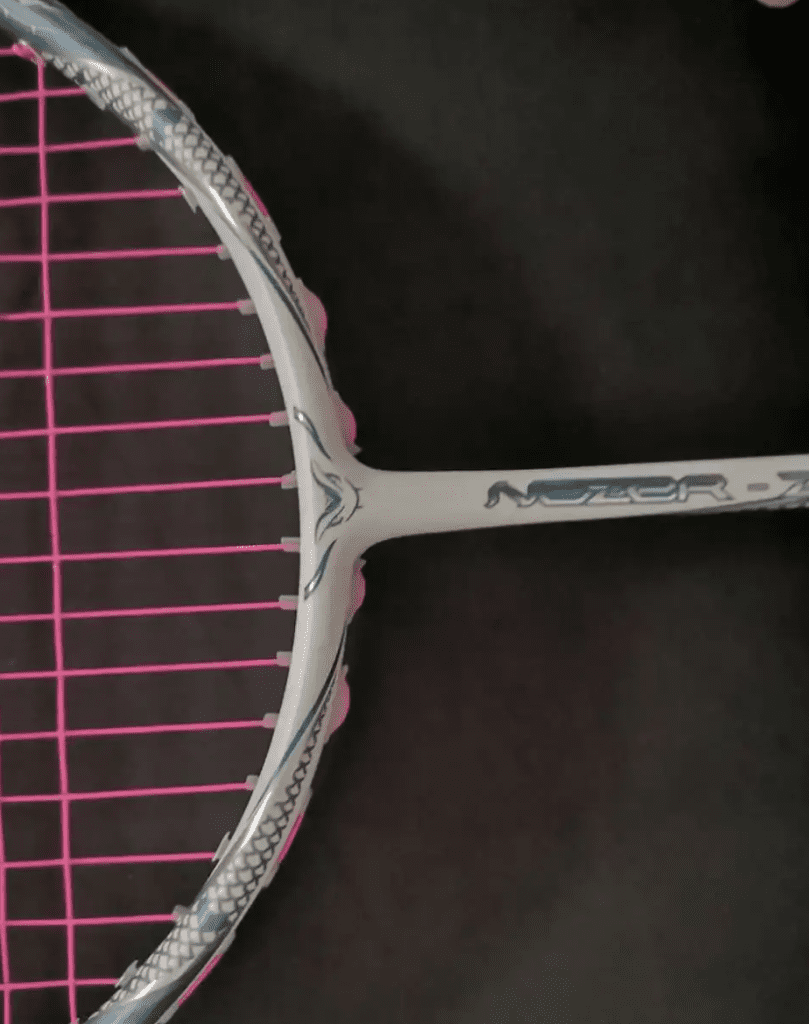
The racket has a high balance point, but the narrowed wind-breaking frame makes the Razer Z’s swing speed quite good. It’s worth mentioning that the wind-breaking treatment on the frame has a strong resemblance to Blue Factory’s Speed series, from the elliptical wind-breaking at the T-joint to the full wind-breaking at the head. This is one of the reasons I compare it to the JS12, as it balances stability and speed.
The sweet spot on the string bed is very large. Combined with the moderately hard shaft, it is not particularly difficult to handle when first using it. However, the large sweet spot also brings about the issue of a scattered sweet spot, which results in a lack of the satisfying feedback when hitting the ball right in the center. The feeling of hitting the ball may not be direct before getting used to the Razer Z, and it might not produce high ball speeds, affecting the control of high clear shots.
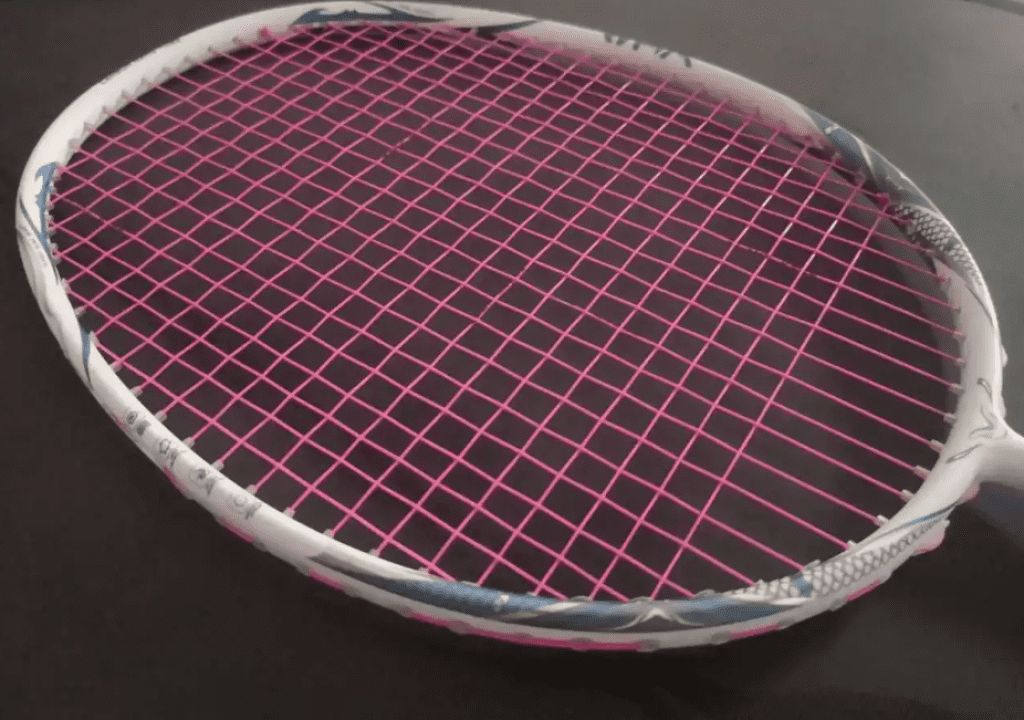
This is a racket that feels great when playing at the net. With its high swing speed and balance point, you can easily reach high points. The larger racket face and higher tolerance help in dealing with slightly higher incoming shots at the net. When opportunities are not ideal or when needing to switch from defense to attack against a drop shot, the larger face and higher tolerance can assist in making quality net shots. For players who enjoy manipulating the ball, various changing rhythms and pushes can be executed with the Razer Z’s lightweight build, increasing the threat of each shot.
In terms of flat drives, it is simply ideal. As long as your ideas and reactions keep up with the opponent’s rhythm, all kinds of line changes, crouch hits, and placements feel effortless.
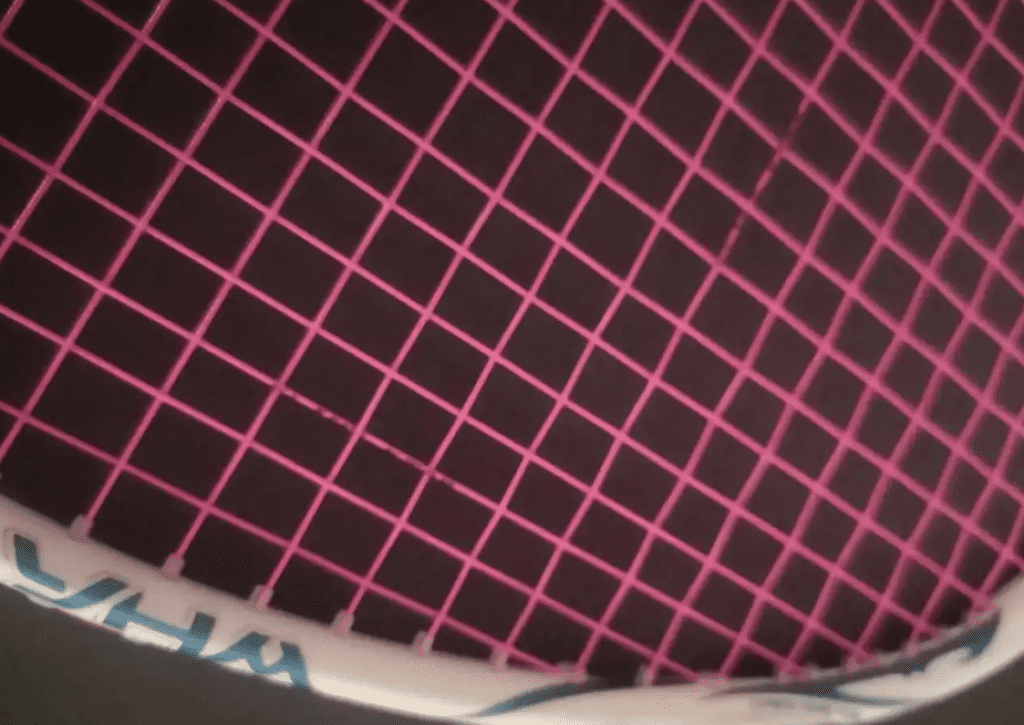
However, the Razer Z still has inherent flaws in torsional stability. There is a lack of stability in controlling the drop points of long shots, leading to deviations in ball trajectory. This flaw is more noticeable in smashes, and since it is a 4U version, despite providing power, the racket seems a bit unstable, leading to some off-target shots and feeling a bit floaty both horizontally and vertically.
Nevertheless, since the racket is designed to be more forgiving, let it play to its strengths with a more continuous rhythm and quick-paced shots to score. In fact, I still prefer using the Razer Z for mixed doubles in the men’s position, as every smash feels more manageable, without the exhausting sensation, and it even makes the footwork feel lighter.
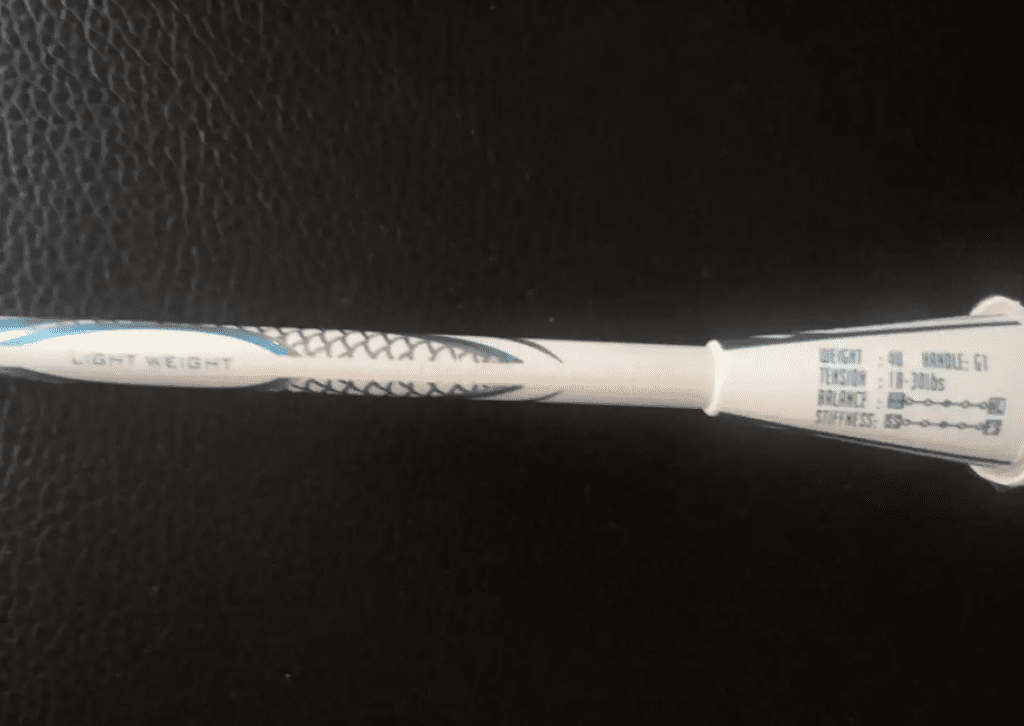
In 2023, Kawasaki released three new Razer models, continuing their focus on doubles rackets after last year’s 1916 launch. Although I mentioned that simple and incremental adjustments based on precedents might become tedious over time, this might only be a concern for equipment enthusiasts. In reality, most of the secondary and independent brand products I’ve encountered are worth their price in terms of completion.
So, unless a manufacturer suddenly decides not to offer ice cream, the competition among manufacturers for mid-range rackets will remain intense for a long time.
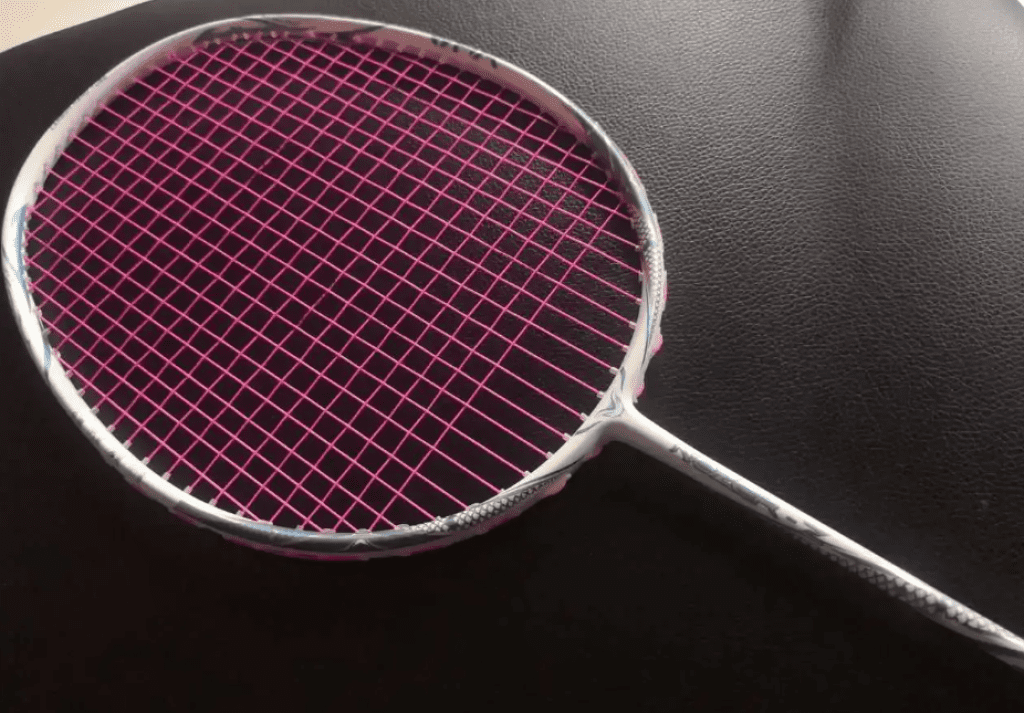

Leave a Reply